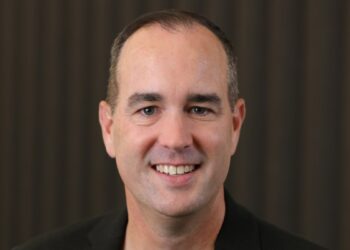Matthew Burgess, director of View Legal, says the intergenerational wealth transfer is producing a litany of estate challenges and the decision in the recent El-Bayeh v El-Bayeh [2025] NSWSC 1177 shows that the courts are considering all aspects of a claimant’s history when deciding on a ruling.
“In recent times, the decision in Cotter v Tomassini [2025] VSC 518 has attracted attention. In this case, an adult child (with no particular health or financial concerns) – who was also likely to ultimately receive in excess of $40 million of assets from her mother – successfully accessed $1.15 million from her father’s $6 million estate,” Burgess said.
“The El-Bayeh case provides a further example of the type of factual matrix that is at risk of challenge via the courts.”
Burgess said the case involves two brothers, the younger one, who was challenging the estate of his deceased older brother.
“There was undisputed evidence (including material sourced from a previous litigation the deceased had been involved in before death) that the deceased had, by choice, acted as a father figure to the claimant from when the claimant was four years old (and the deceased was 21) for around 40 years.”
“The claimant indeed lived with the deceased until they fell out in 2010, at which time the claimant was 45 years of age. The deceased financially controlled a business that the claimant had worked in for 10 to 12 hours a day, six or seven days a week for over 10 years – at a rate of $20 a day.”
The court heard that on the date of the claim against the estate, its net value was estimated at around $45 million.
“In stepping through each of the key criteria to permit a challenge against an estate, the court confirmed that firstly the claimant was clearly a member of the deceased’s household for many years, and therefore within the class of persons entitled to make a challenge,” Burgess said.
“It also noted the claimant was at least partially, if not wholly, dependent on the deceased for many years. Additionally, there were an array of factors which demonstrated a social, domestic or moral obligation on the deceased to make some provision for the claimant, including prior purchases of a property for the claimant (to offset the failure to pay fair wages), the father-figure role the deceased had actively taken and the fact that the deceased’s wealth had been created in ‘no small way’ by the deceased collecting the earnings of the family business as well as other income and social security benefits from his numerous siblings, including the claimant, for many years.”
The court decided in this context to allocate $1.45 million to the claimant, noting that “the vibe” is a relevant factor – or more particularly, the court must engage in a “multifaceted evaluative task” (see Angius v Angius [2025] NSWCA 113 and Lalic v Lalic [2022] NSWSC 31) and cannot simply be approached by the court looking solely at the claimant’s financial needs (see Sgro v Thompson [2017] NSWCA 326).
“The court also stated that the overall nature of the relationship must be considered between the deceased and the claimant, and the fact here that the parties had essentially not spoken since 2010 was not a circumstance that ‘presumptively disentitled’ the claimant (see Underwood v Gaudron [2015] NSWCA 269),” Burgess said.
“It also noted that the claimant was not financially secure, and had poor health, factors reinforcing that the making of provision was appropriate. Furthermore, the estate was substantial, meaning the court was ‘free to make a more liberal assessment of what is proper provision in the sense that competition for limited resources is much reduced or eliminated and unqualified by competing claims’ (see Tarbes v Taleb [2023] NSWSC 565).”
Burgess added that both the El-Bayeh case and the Cotter case reinforce that, particularly in larger estates, the likelihood of the courts allowing successful challenges is increased.
“This is particularly so in NSW, where access can often also be had to assets held via trusts and companies under the notional estate regime. In other jurisdictions, if properly structured, assets owned via trusts and companies are excluded from challenges against estates.”
“Much of the reasoning behind an increased exposure for valuable estates can be sourced from the historical decision in Re Buckland deceased [1966] VR 404 in which the court stated: ‘The court’s jurisdiction (in relation to challenges against estates), whatever the size of the estate, is limited by the claimant’s need for maintenance and support; but that the maintenance and support to which he or she may for this purpose be treated as needing is that appropriate to his or her station or condition in life’.”


